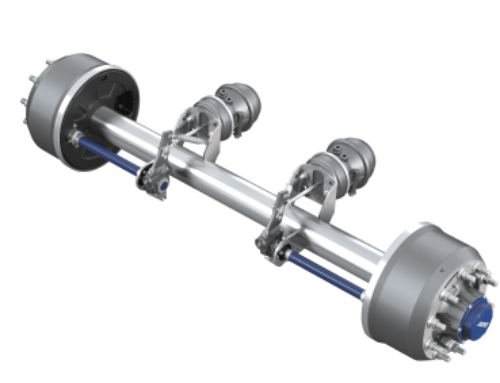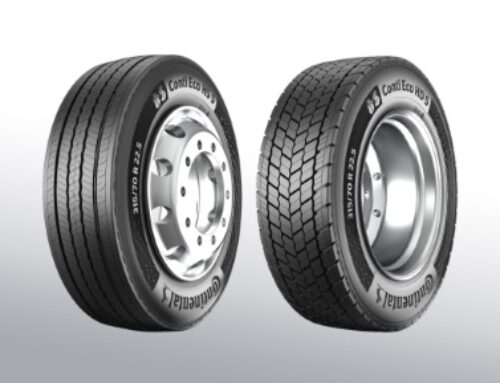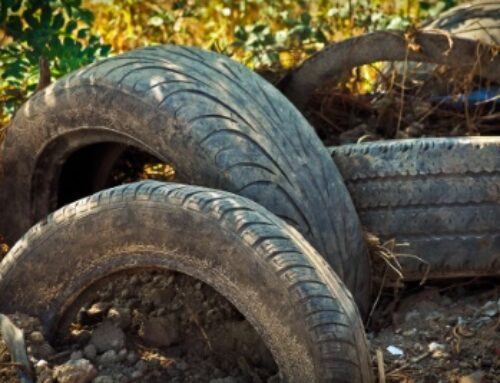Kuda UK puts auto spoiler adjustment in the spotlight
 Commercial vehicle accessories provider Kuda UK has outlined how automatic spoiler adjustment systems such as its LaserEye product can both reduce costs through increased aerodynamic efficiency, and improve operator safety.
Commercial vehicle accessories provider Kuda UK has outlined how automatic spoiler adjustment systems such as its LaserEye product can both reduce costs through increased aerodynamic efficiency, and improve operator safety.
“Truck aerodynamics is not a new or radical idea; it’s fairly standard industry knowledge that a large, tall trailer coupled to a tractor unit with a relatively small air management kit leaves a huge area of the trailer bulkhead exposed to oncoming airflow, thus increasing the drag on the vehicle significantly which in turn leads to higher fuel consumption,” said Tim Vincent, commercial director at Kuda UK Ltd.
“Independent studies have shown that just 200mm of exposed bulkhead can potentially increase a vehicle’s fuel consumption by three per cent.”
In monetary terms, based on a vehicle running 100,000 miles a year with an annual fuel bill of around £53,000, three per cent works out £1,590, points out Tim.
“That’s just for a 200mm gap from the top of the vehicle’s spoiler to the top of the trailer. With most vehicles being four metres and under, and a large majority of trailers in the UK being up to 4.6, even 4.8 metres, that 200mm quickly becomes 600mm or even 800mm meaning some operators’ fuel costs could be in excess of £6,000 higher than they need to be.
“Multiply that by a fleet of 10, 20 or even 100 vehicles, and it’s easy to see why ensuring your fleet’s roof spoilers are set at the optimum height as often as possible. “
He continued: “A large number of fleets are increasingly installing air management to their vehicles for this reason. Whilst this is a great step forward to reducing fuel costs and a fleets overall carbon footprint, it is not necessarily the end of the story.”
The main issue with ‘traditional’ air management, says Tim, is the adjustment system for the roof-mounted spoiler.
“If your trucks are always hooked up to the same trailer and the vehicle height rarely changes, then a manual adjusting spoiler will work perfectly for you,” he said.
“Similarly if your fleet is made up predominantly rigid or low level vehicles then there is simply no need to install even a manual adjusting kit; a fixed spoiler will do the job.
 “However, in the ever changing world of long-distance haulage, the chances of your vehicles being hooked up to the same sized trailer (or even shipping container) for each trip becomes less and less likely. That’s where automatic spoiler adjustment systems such as LaserEye really come into their own.”
“However, in the ever changing world of long-distance haulage, the chances of your vehicles being hooked up to the same sized trailer (or even shipping container) for each trip becomes less and less likely. That’s where automatic spoiler adjustment systems such as LaserEye really come into their own.”
From a fleet manager’s point of view, says Tim, the benefits are clear of a system which is totally autonomous, requires no input from the driver whatsoever, and offers the optimum drag/fuel efficiency for the specific vehicle set-up at the time.
“It undoubtedly saves money,” he continued.
“In fact, most operators report fuel savings when using our LaserEye system, coupled with a high volume iAM air management kit, of above 20 per cent.”
Further benefits of automatic spoiler adjustment systems come in the way of driver retention and safety, adds Tim.
“With LaserEye being 100 per cent automatic, it will detect the height of the trailer, activate the actuator rams and set the spoiler to its optimum height for the journey. There is no need for climbing to adjust the spoiler, and no risk of injury.”
Kuda UK cites customer John Leonard, transport manager at Sheard Packaging, who said: “The combination of [Renault’s] Optifleet and the new Range Ts, which are equipped with the latest technology and Kuda variable air deflectors and trailers, has seen our fleet’s fuel efficiency increase by a mighty 2-3mpg compared to the first 2014 Range Ts.”
Depending on the area of bulkhead exposed, Kuda UK predicts return on investment for an air management kit with LaserEye technology within the first year of purchase, and potentially in just over 17 weeks.











